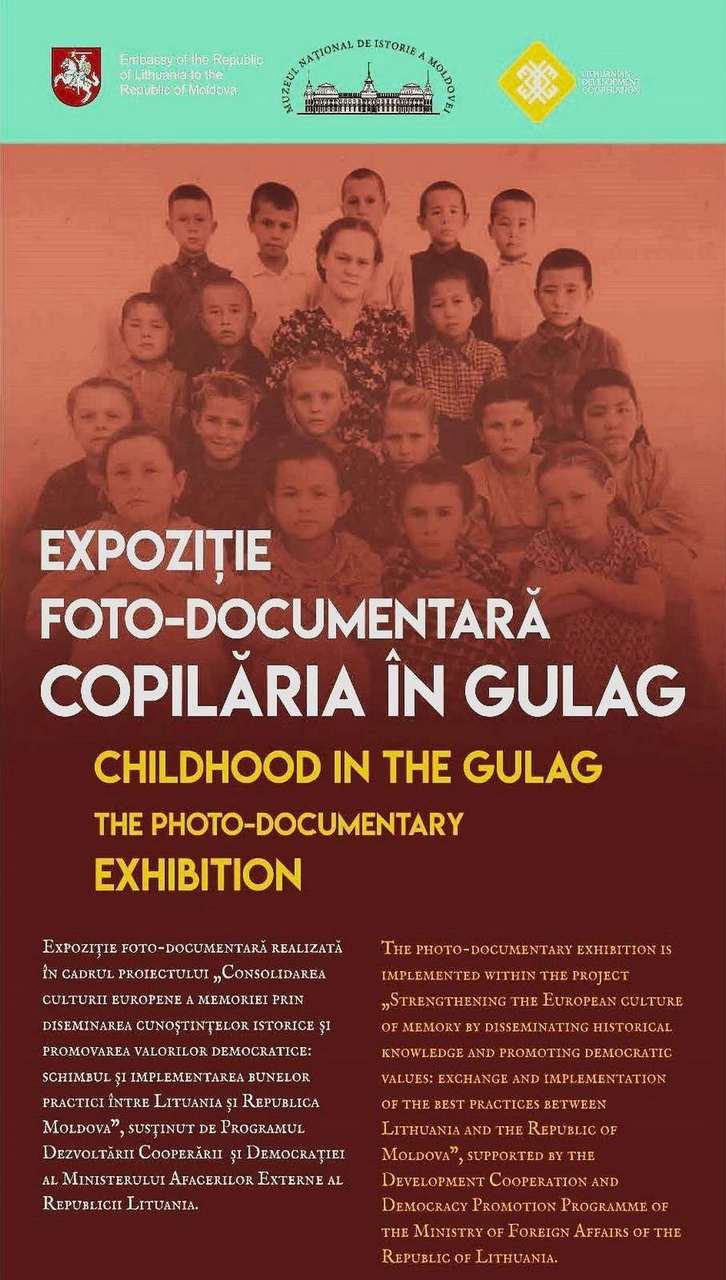 At 20 May, 2024, the National Museum of History of Moldova, in partnership with the Embassy of the Republic of Moldova in Romania and the Senate of the Romanian Parliament, organized a new opening of the traveling exhibition "Childhood in the Gulag" (curator Dr. Ludmila D. Cojocaru). The event takes place in the context of the 75th anniversary commemorated in 2024 of the second and largest wave of Stalinist deportations from Bessarabia, which took place on July 5-6, 1949.
At 20 May, 2024, the National Museum of History of Moldova, in partnership with the Embassy of the Republic of Moldova in Romania and the Senate of the Romanian Parliament, organized a new opening of the traveling exhibition "Childhood in the Gulag" (curator Dr. Ludmila D. Cojocaru). The event takes place in the context of the 75th anniversary commemorated in 2024 of the second and largest wave of Stalinist deportations from Bessarabia, which took place on July 5-6, 1949.
The exhibition "Childhood in the Gulag" presents photo-documentary images that reflect the life of Bessarabian children condemned to deportation, starvation, Russification, indoctrination and forced separation from their own families based on the repressive policies of the totalitarian-communist regime in the Moldavian SSR, in the period 1940-1941 and 1944-1953.
The exhibition brings together around 180 photo-documentary images, accompanied by memories and archival documents from the collections of the National History Museum of Moldova, the Edineț County Museum, the Museum of History and Ethnography in Soroca, the Pro Memory Institute, from the archives of the memory communities, as well as family archives of the victims of the totalitarian-communist regime in the Moldavian SSR.
The exhibition is a homage to the children who went through the atrocities of the totalitarian-communist regime in the USSR, a sign of memory to the innocent victims, a gesture of symbolic justice towards the Bessarabian children who went through the Gulag.
The event was attended by members of the diplomatic corps accredited in Bucharest, representatives of state institutions in Romania, but also historians and those interested in the history of the Republic of Moldova.
The exhibition is opened in the foyer of the Plenary Hall of the Senate of the Romanian Parliament (Bucharest, Palatul Parlamentului, str. Izvor, no. 2-4) until May 31, 2024.
The photo-documentary exhibition "Childhood in the Gulag" was elaborated with the support of "The Development Cooperation and Democracy Promotion Programme" of the Ministry of Foreign Affairs of the Republic of Lithuania.























































